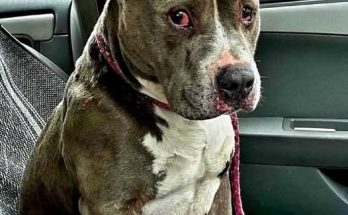dogs can suffer from a condition very similar to human OCD, commonly referred to as Canine Compulsive Disorder (CCD). While the term “OCD” is often used casually to describe quirky or repetitive behaviors in pets, actual CCD is a serious anxiety-related disorder that can significantly interfere with a dog’s normal functioning and well-being.
Understanding Canine Compulsive Disorder (CCD)
CCD involves repetitive, seemingly purposeless behaviors that are derived from normal activities (like grooming or walking) but are performed excessively and out of context.
- Difference from normal behavior: A normal dog might chase its tail for a moment while playing. A dog with CCD might spin for hours each day to the exclusion of eating, sleeping, or other basic needs.
- Causes: The disorder is often linked to chronic stress, anxiety, conflict, lack of stimulation, and a lack of a predictable routine. There is also a strong genetic predisposition in certain breeds.
- Triggers: Triggers can include environmental changes, loud noises, or owner attention (even negative attention).
Common Compulsive Behaviors
Specific behaviors often vary by breed:
- Spinning or tail chasing: Common in Bull Terriers and German Shepherds.
- Acral lick dermatitis (excessive licking): Often seen in Labradors and Retrievers, leading to raw sores.
- Flank sucking: Prevalent in Dobermans.
- Fly biting: Miniature Schnauzers and Cavalier King Charles Spaniels may snap at imaginary flies.
- Pica: Eating non-food items like dirt or rocks.
- Light/shadow chasing: A behavior that can be inadvertently encouraged by the use of laser pointers.
Management and Treatment
If you notice a potentially compulsive behavior in your dog, it’s crucial to consult a veterinarian first to rule out any underlying medical conditions or pain.
Treatment typically involves a combination of the following:
- Behavior modification: Identifying and reducing stressors, providing a predictable routine, and using positive reinforcement to teach the dog to substitute a calm or desired behavior for the compulsive one.
- Environmental enrichment: Ensuring the dog gets enough physical exercise and mental stimulation through puzzle toys and training.
- Medication: In severe cases, anti-anxiety medications (such as Prozac) may be prescribed by a veterinarian or veterinary behaviorist to help manage symptoms, in conjunction with behavior modification.
It is important never to punish the dog for these behaviors, as it can increase their anxiety and make the condition worse. Early intervention is key to effective management. You can find more information on this condition through reliable sources like the



